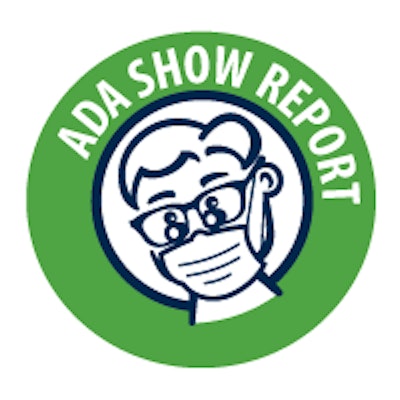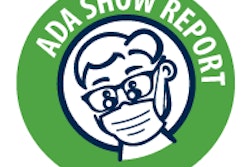
NEW ORLEANS - In the company's first product designed specifically for hygiene, Isolite Systems unveiled the Isovac dental isolation adapter at the ADA 2013 annual session.
The Isovac adapter provides the same suction control of the upper and lower quadrants as the company's Isolite and Isodry dental isolation systems. The company highlighted a noteworthy difference: The Isovac replaces the high-volume evacuator (HVE) at the hose while the Isolite and Isodry isolation systems augment existing suction devices.
 The Isovac dental isolation adapter unsnaps so the evacuation lines can be cleaned.
The Isovac dental isolation adapter unsnaps so the evacuation lines can be cleaned.
The installation is designed to be user-friendly. First, the clinician removes the HVE adapter handpiece, then replaces it with the Isovac. "It pulls off or snaps right on" to an existing available HVE line, said Rolando Mia, vice president of marketing and sales. "That HVE connector is almost never used because it is too powerful. This offers a cost-effective way for the practice to utilize an existing investment."
The device provides the same level of isolation as a rubber dam while minimizing debris and fluids with hands-free vacuum suction. "It virtually eliminates the level of humidity in the oral cavity," Mia added. "Even a small amount of humidity can compromise a sealant."
Hygiene is a major component of the Isovac, and the company sought out a way to simplify the process while also increasing access to key areas for cleaning. The unibody control head assembly is constructed from a hard polymer, and the company designed the Isovac to have a simple cleaning process, as it can be disengaged and opened to give direct access to the evacuation channels.
"Those channels are small and difficult to clean in devices that can't be taken completely apart," Mia said. "This literally takes a second to open it up."
When the clinician has completed his or her procedure, the Isovac can be placed inside the autoclave while leaving space available for other instruments.
The Isovac is fully compatible with Isolite's isolation mouthpieces. Tom Hirsch, DDS, who collaborated with his brother James to found the company and invent the Isovac, touted the ability of the device to improve efficiency when it is used in tandem with Isolite mouthpieces.
"Hygienists don't have assistants, so this provides that extra hand," he said. "It offers complete control of the oral environment, hands-free. But you also have control of the patient: There is no need for repositioning or to sit the patient up so he or she can spit."
 Isolite co-founder Tom Hirsch, DDS, demonstrates how effectively the Isovac enables evacuation with an assistant.
Isolite co-founder Tom Hirsch, DDS, demonstrates how effectively the Isovac enables evacuation with an assistant.
To demonstrate the products, Dr. Hirsch gave a rather alarming demonstration he called "dental boarding" while at the Isolite Systems booth in the ADA Exhibit Hall. He attached an isolation mouthpiece to the Isovac and inserted it into an assistant's mouth. Next, he poured in the entire contents of a newly opened bottle of water. She expressed no discomfort whatsoever.
Use of the devices can significantly decrease the time it takes to place sealants, Dr. Hirsch added. "Ask around this meeting for an idea of how long it takes to place four sealants in four quadrants. For the sake of argument, let's put it at 20 minutes. But with these devices, it can be done in under five. I'll take the challenge."
Isolite Systems is packaging the Isovac dental isolation adapter in packages of three. The thinking is that one will be on the dental chair, one will be in cleaning and processing, and one is sterile and ready for use.



















